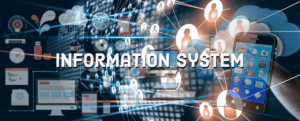Key Points:
- The U.S. regulatory environment is perceived as relatively relaxed compared to the EU’s approach to AI regulation.
- Klarna’s AI assistant tool showcases significant labor productivity gains, driving interest in AI technology.
- Proposed robot taxes seek to mitigate AI-driven job displacement, with economists advocating for modest tax rates.
- Erik Brynjolfsson highlights the importance of balanced AI regulation in fostering innovation while addressing societal concerns.
The U.S. government is contemplating legislation to facilitate societal adaptation to the increasing presence of artificial intelligence (AI). Early adopters of AI technology are already experiencing notable gains in labor productivity. Klarna, a leading buy now, pay later financial services provider, anticipates a $40 million profit boost by the end of 2024 through its AI assistant tool, effectively performing tasks equivalent to 700 full-time agents.
Powered by OpenAI’s systems, Klarna’s AI assistant tool exemplifies the transformative potential of AI in various sectors. ChatGPT and Sora, two products utilizing OpenAI’s technology, have garnered widespread attention, prompting engagement from Congress. In 2023, Congress convened discussions with tech industry leaders, including Sam Altman, CEO of OpenAI, to gain insights into AI’s implications and best practices. Subsequently, the White House sought collaboration from 15 private industry leaders to guide lawmakers in navigating AI risks and opportunities.
While the Senate Task Force on AI has enacted several bills focusing on research and risk assessment, the U.S. regulatory landscape appears comparatively lenient when contrasted with the European Union’s more stringent measures. Concerns persist among economists regarding AI’s potential to disrupt job markets, particularly for white-collar workers.
Efforts to mitigate AI-driven job displacement include proposed legislation in the New York State Assembly to implement robot taxes, incentivizing companies to retain human workers. However, the bill’s fate remains uncertain, with economists advocating for a modest tax rate to balance innovation and workforce stability.
Erik Brynjolfsson, a senior fellow at Stanford Institute for Human-Centered AI, emphasizes the need for nuanced policy responses, cautioning against overly burdensome regulations that stifle innovation. He underscores the role of AI in enhancing productivity and technological growth, suggesting that taxing robots may hinder economic progress.
While acknowledging AI’s transformative potential, Brynjolfsson stresses that widespread automation replacing human tasks remains a prospect rather than a current reality. As the debate over AI legislation unfolds, policymakers aim to balance fostering innovation and safeguarding against potential societal disruptions.












